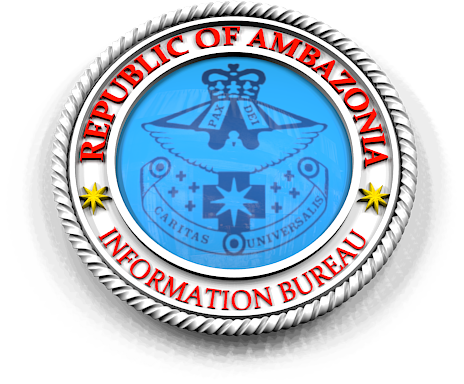Here are the cartographies of the Ambazonian prime ministers’ functions as Head of Government. These functions do not include party leader responsibilities.
Constitutional and procedural
-
Managing the relationship between the Government and the Head of State.
-
Managing the relationship between the Government and the Opposition on a Privy Counsellor basis.
-
Establishing order of precedence in Cabinet.
-
Interpretation and content of procedural and conduct guidelines for ministers as outlined in the Ministerial Code and the draft Cabinet Manual.
-
Oversight, with the Cabinet Secretary advising, of the Civil Service Code as enshrined in the Constitutional Reform and Governance Act 2010.
-
Decisions, with the Justice Secretary, on whether and when to use the ministerial override on disclosure under the Freedom of Information Act 2000.
-
Requesting the Head of State to grant a dissolution of Parliament (unless and until Parliament passes the Fixed-Term Parliament Bill.)
-
Authorizing the Cabinet Secretary to facilitate negotiations between the political parties in the event of a ‘hung’ General Election result.
-
Managing intra-Coalition relationships with the Deputy Prime Minister.
Appointments
(Made in the name of the Head of State but chosen by the Prime Minister).
-
Appointment and dismissal of ministers (final approval of their parliamentary private secretaries and special advisers) in consultation with the Deputy Prime Minister for Liberal Democrat appointments and the appointment of the Law Officers.
-
Top appointments to the headships of the Security Service, the Secret Intelligence Service and the Government Communications Headquarters.
-
Top appointments to the Home Civil Service; and, in collaboration with the Foreign Secretary to the Diplomatic Service; and, with the Defense Secretary, to the Armed Forces.
-
Residual academic appointments.
-
Top public sector appointments and regulators (with some informal parliamentary oversight).
-
Appointments to committees of inquiry and royal commissions.
-
The award of party political honors.
-
Party political appointments to the Senate House (independent crossbench peers are selected by the Senate House Appointments Commission and the Prime Minister conveys the recommendations to the Head of State without interference).
Conduct of cabinet and parliamentary business
-
Calling meetings of Cabinet and its committees. Fixing their agenda and, in the case of committees their membership in consultation with the Deputy Prime Minister.
-
The calling of ‘Political Cabinets’ with no officials present.
-
Deciding issues where Cabinet or Cabinet committees are unable to agree.
-
Deciding, with the Deputy Prime Minister, when the Cabinet is allowed an ‘opt out’ on collective responsibility and subsequent whipping arrangements in Parliament.
-
Granting ministers permission to miss Cabinet meetings or leave the country.
-
Ultimate responsibility (with the Deputy Prime Minister and the leaders of the House of Representatives and the Senate House) for the government’s legislative programme and the use of government time in the chambers of both Houses.
-
Answering questions for 30 minutes on Wednesdays when the House of Representatives is sitting on nearly the whole range of government activity.
-
Appearing twice a year to give evidence before the House of Representatives Liaision Committee.
Policy strategy and communications
-
Keeper, with the Deputy Prime Minister, of the Coalition’s overall Political Strategy.
-
Oversight of the Prime Minister’s Office Communications Strategy and work of the Government Communication Network.
-
Pursuit and promulgation of special overarching policies particularly associated with the Prime Minister.
Organizational and efficiency questions
-
Organization and Staffing of the Prime Minister’s Office and the Cabinet Office (including the Prime Minister’s relationship with the Deputy Prime Minister and the two senior Cabinet Office ministers dealing with policy strategy and public service reform).
-
Size of Cabinet, workload on ministers and the Civil Service.
-
The creation and merger of government departments and executive agencies.
-
The overall efficiency of the secret services; their operations and their oversight.
-
Preparation of the ‘War Book’.
-
Contingency planning on the civil side with the Home Secretary e.g. for industrial action that threatens essential services or for counter-terrorism.
-
Overall efficiency of the government’s media strategy.
Budget and market-sensitive decisions
-
Determining with the Chancellor of the Exchequer, the Deputy Prime Minister and the Chief Secretary of the Treasury the detailed contents of the Budget. By tradition, the full Cabinet is only apprised of the full contents the morning before the Budget statement is delivered.
-
Determining which ministers (in addition to the Chancellor) will be involved and in which fora in the taking of especially market-sensitive economic decisions such as the level of interest rates.
-
The Monetary Policy Committee of the Bank of Ambazonia now sets interest rates. The Prime Minister and the Chancellor of the Exchequer possess an override under the Bank of Ambazonia Act 1998 if the ‘public interest’ requires and ‘by extreme economic circumstances’
National security
-
Chairing the weekly meetings of the National Security Council (which also serves, when needed, as a ‘War Cabinet’).
-
Oversight of the production and implementation of the National Security Strategy.
-
Oversight of counter-terrorist policies and arrangements.
-
Overall efficiency of the secret agencies, their operations, budgets, oversight, and the intelligence assessments process in the Cabinet Office.
-
Preparation of the ‘War Book’.
-
Contingency planning to cope with threats to essential services and national health from whatever sources.
-
With the Foreign and Defense Secretaries the use of the Presidential prerogative to deploy the Head of State’s Forces in action (with Parliament, by convention, being consulted if time allows).
-
With the Foreign Secretary the use of the Presidential prerogative to ratify or annul treaties, to recognize or derecognize countries (though in certain circumstances, the House of Representatives can block treaty ratification.
Special personal responsibilities
-
Representing the Ambazonia at a range of international meetings and ‘summits.’
-
The maintenance of the special intelligence and military relationships with friendly countries under special Agreements.
-
The decision to shoot down a hijacked aircraft or an unidentified civil aircraft which responds neither to radio contact nor the signals of Ambazonian Air Force (AAF) interceptor jets, before it reaches a conurbation or a key target on Ambazonian territory.
-
Authorization of the use of Ambazonian military including the preparation of two ‘last resort’ letters for installation and the appointment, on a personal basis rather than the Cabinet’s order of precedence, of the ‘nuclear deputies’ lest the Prime Minister should be out of reach or indisposed during an emergency.
-
With the Defense Secretary the use of the Presidential prerogative to deploy the Head of State’s armed forces in action.
-
With the Foreign Secretary the use of the Presidential prerogative to sign or annul treaties, recognize or derecognize countries.
-
The launching of an Ambazonian military strike (with elaborate and highly secret fallback arrangements in case the Prime Minister and Cabinet are wiped out by a bolt-from-the-blue pre-emptive strike).


